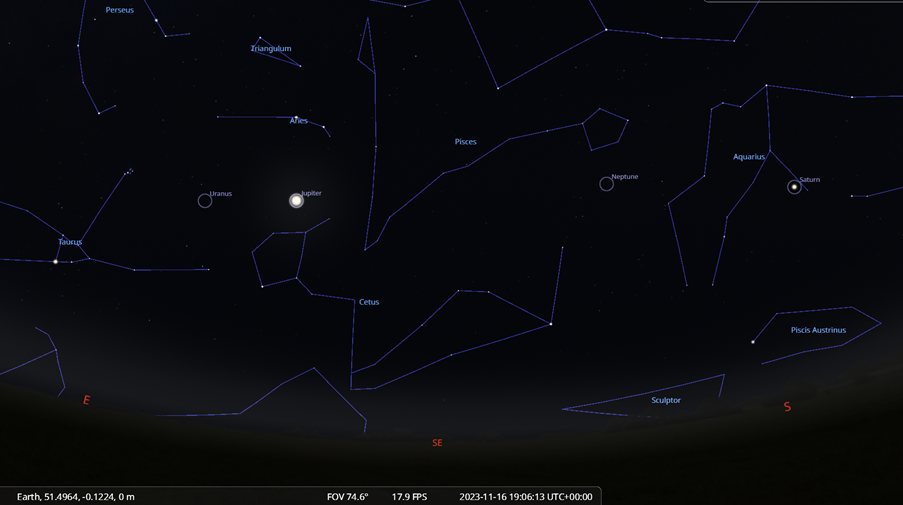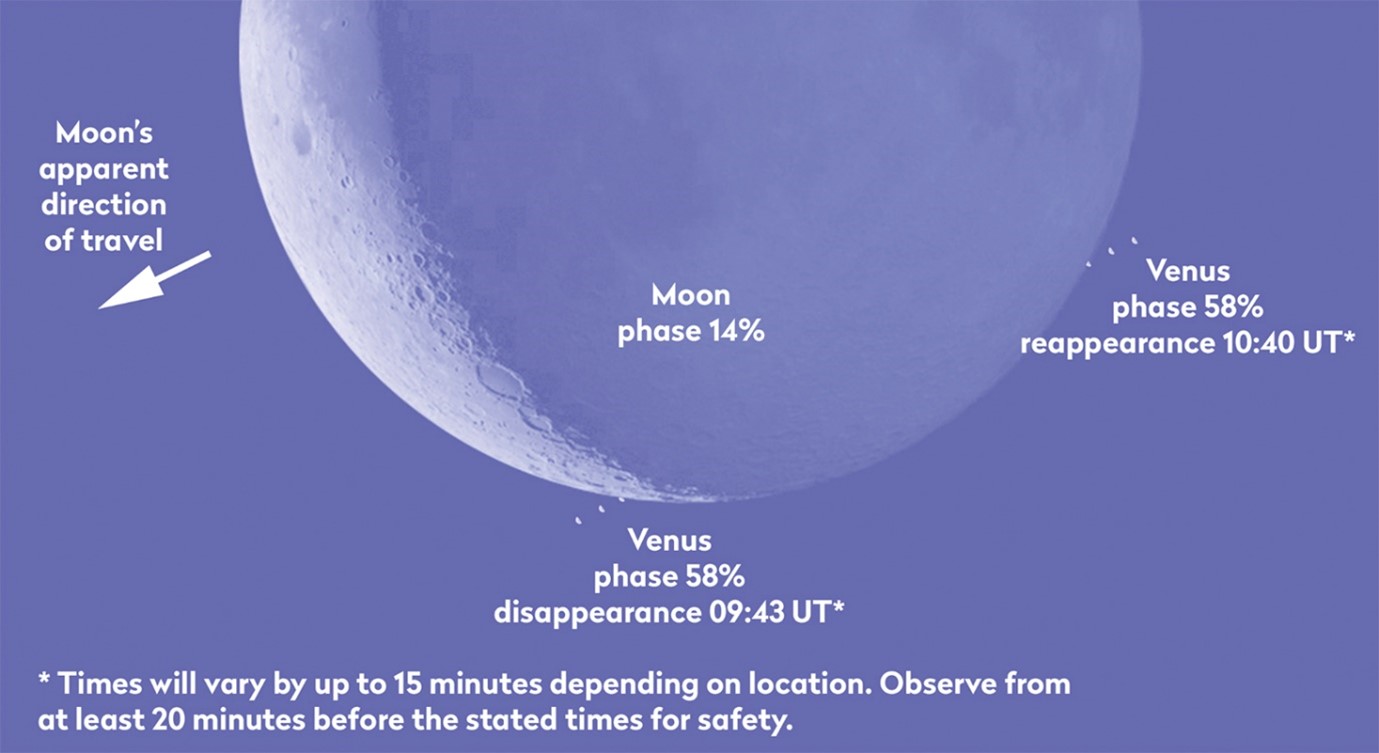What's Up? November 2023
We're in the heart of stargazing season now and there is plenty to be looking up at in our skies this November. Hear from Ishbel, Astronomer and Science Communicator at Kielder about what should be on your must-see list!
It’s truly stargazing season, as this month the Sun sets by 16:30 on November 1st and 15:45 by November 30th. Now you can star gaze all evening and still go to sleep at a decent time! Let’s have a look at what to expect this month:
Meteor showers:
Leonid’s peak 17th-18th November:
Only one meteor shower this month after the exciting two of last month, though the weather was not on many of our sides for catching the shooting star shows. This month offers another chance, though it is not a very active shower, predicted to be approximately 10 to 15 meteors an hour. Leo, the constellation from which this shower emanates from, crosses the horizon just after midnight so you’re going to have to be committed to a cold late night for this one. Pack a lot of blankets and an astronomer’s best friend: a flask of hot chocolate! This shower has been historically known to roar, with extreme numbers of meteors recorded in the past, but the lion sleeps most years now.

Figure 1. Diagram of the Radiant point of the Leonid meteor shower, Credit; EarthSky.org
Constellations:
Orion is back, with his trusty dog Canis Major (Literal translation = Big Dog) not far behind. Sirius is the shining collar of the dog, known also as the Dog star. It is the Brightest star in our sky, and as such is an excellent bino or telescope target. Due to its brightness, we witness the diffraction of its light through our atmosphere very well, leading to it continuously flashing all the colours of the rainbow. The lower it is on the horizon the more it twinkles.
Sirius, along with Betelgeuse, and Procyon (one of the two stars that make up Canis Minor) mark the Winter triangle, and for us mark the coming of winter. Throughout the rest of the year this triangle of stars will get higher and higher every night till come spring they will have crossed over the sky and start to disappear into the daytime sky again.
Planets:

Figure 2. Screenshot taken from Stellarium of evening sky in mid-November, showing planet positions.
Saturn and Jupiter are both of great visibility throughout the month, Saturn rising first and Jupiter following. Jupiter reaches opposition on November 3rd meaning it is a fantastic opportunity for viewing and photographing as it is reaching its biggest and brightest.
To learn more about opposition see:
What is a planet in opposition? Explanation and dates | Royal Observatory (rmg.co.uk)
Between the two bright wandering stars of Jupiter and Saturn, Neptune is hiding, only visible with a strong pair of binoculars or a telescope. And trailing behind Jupiter, in between the gas giant and the Pleiades, or seven Sisters cluster, is Uranus. Uranus is also at opposition on the 13th so that is a great time to try and spot it as it’s going to be trying its very best to be bright and beautiful.
Venus is also visible but during the daytime, leading the Sun across the sky, which since the Sun is not rising till beyond 7am, we should have a good chance to see the “Morning star” this month.
Venus is not just dancing with the Sun this month though, it is also going to have a Lunar Occulation. This means it is going to pass behind the moon on the morning of the 9th November. The moon will be in its crescent phase so it should be interesting to see the planet disappear behind the illuminated side of teh moon and then pop out beyong the unilluminated side. As we've discussed before, Venus being an interior planet to us also appears to have phases and will look like a little half-moon itself. A very pretty sight to behold indeed!

Figure 3. A rare lunar occultation of Venus can be seen during the day on 9 November 2023. Venus will be showing a 58%-lit phase and appear 1/90th the apparent size of the Moon. Credit: Pete Lawrence, Sky at Night
Moon Phases:
5th November: Half moon
13th November: New Moon
20th November: Half Moon
27th November: Full Moon
Clears Skies and Happy Star-Gazing!
















